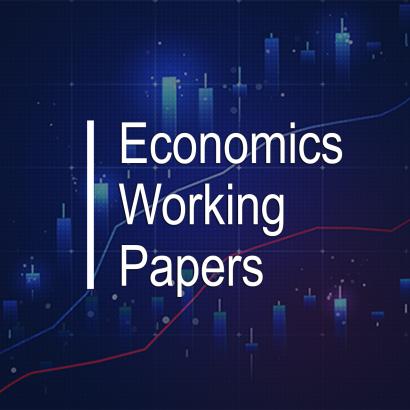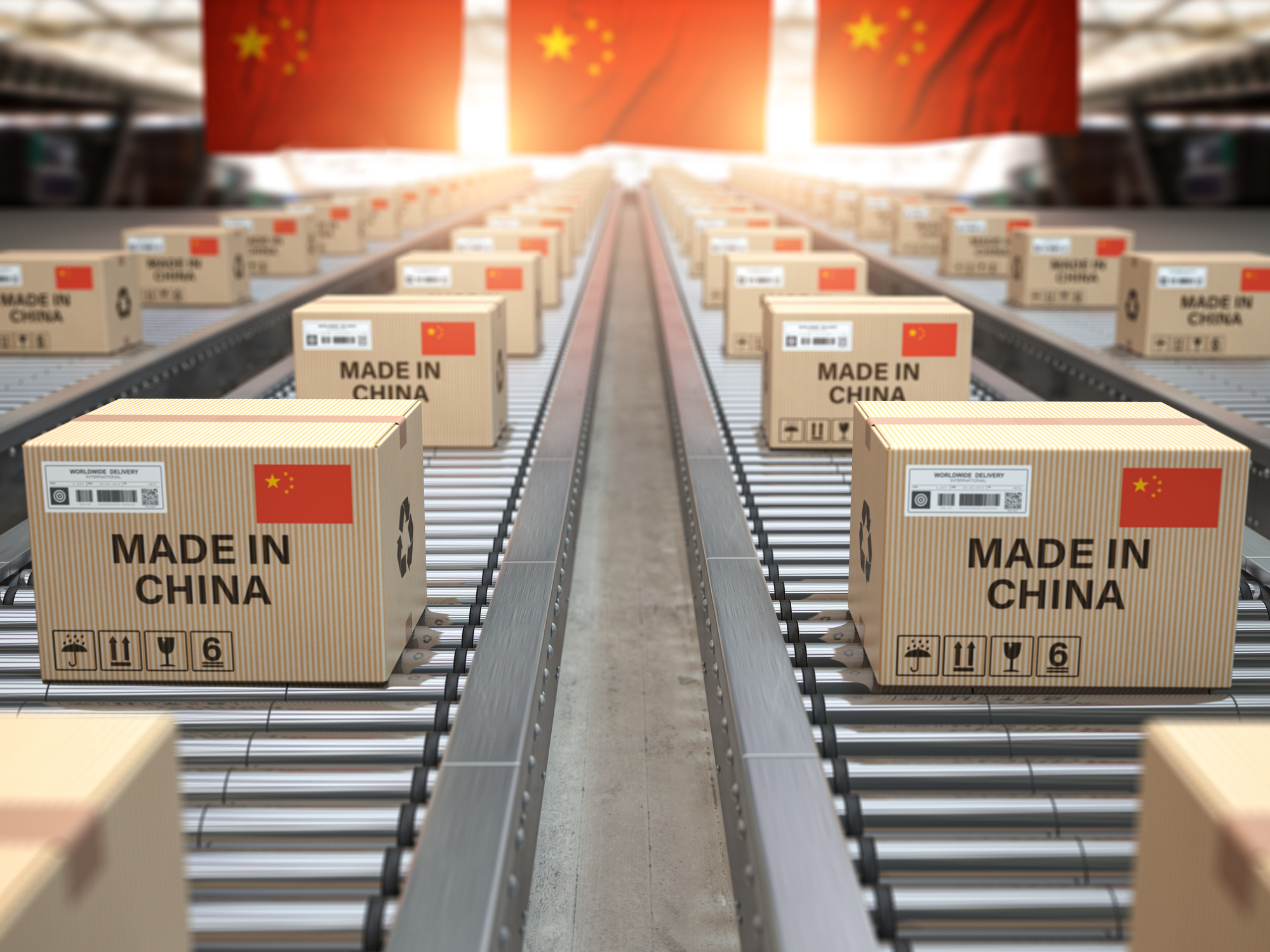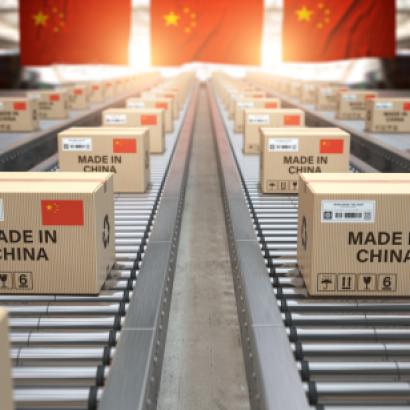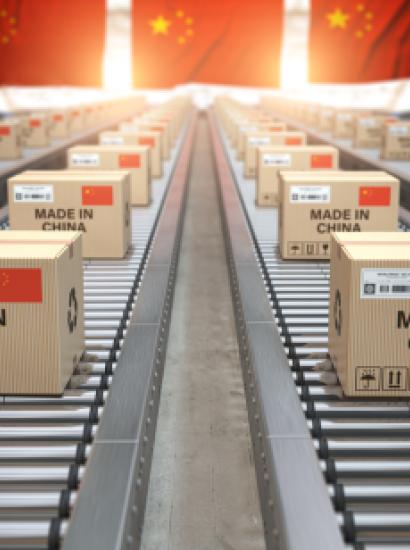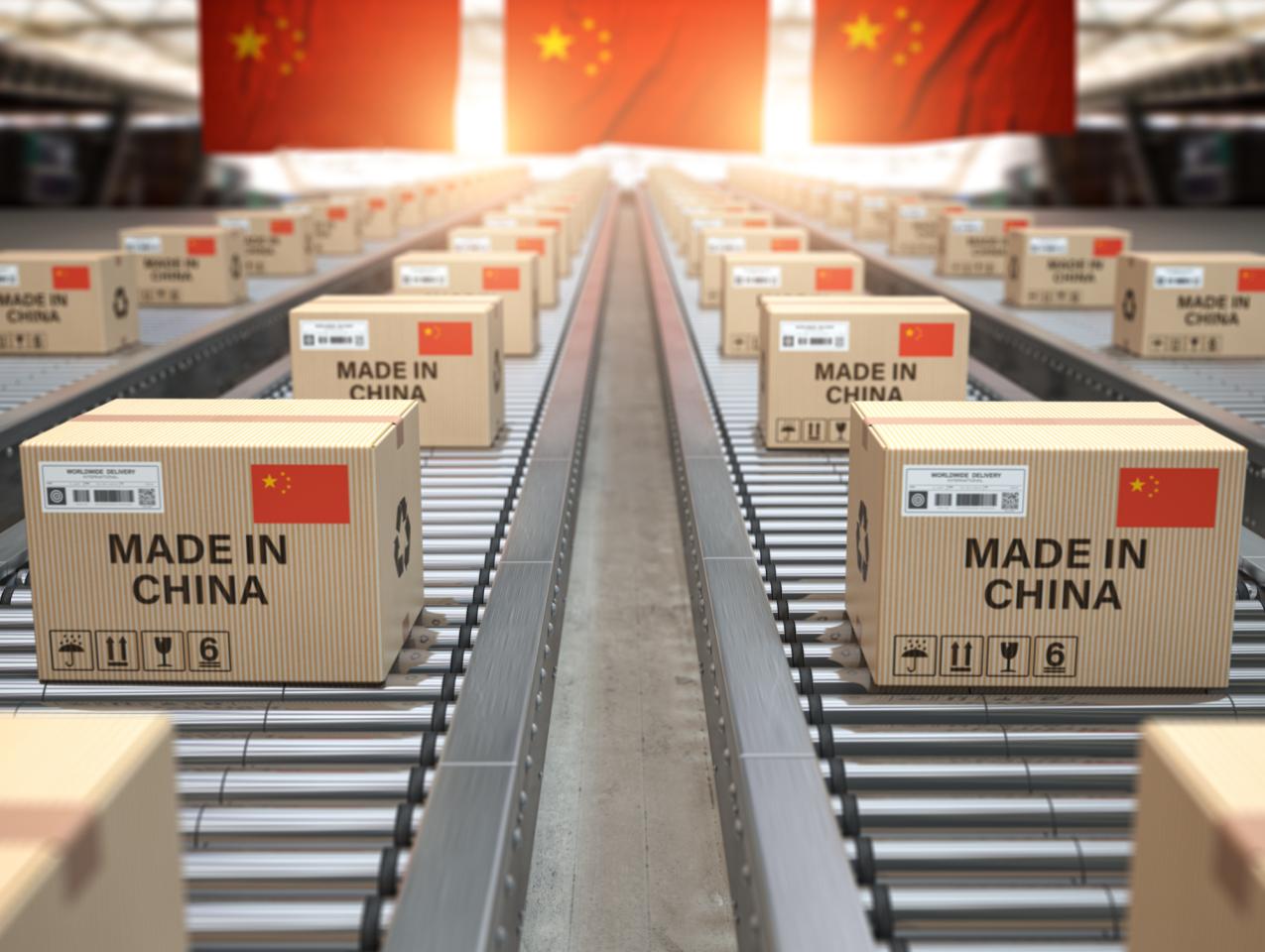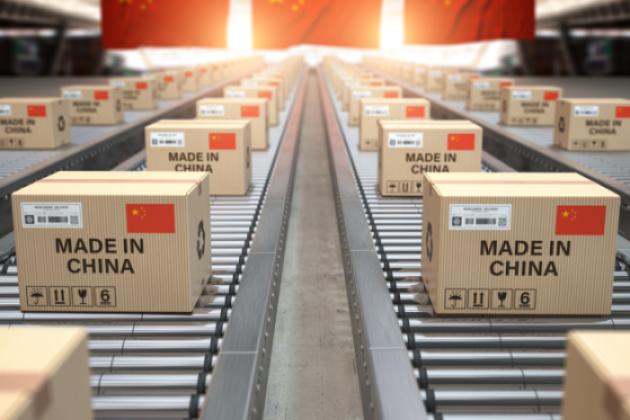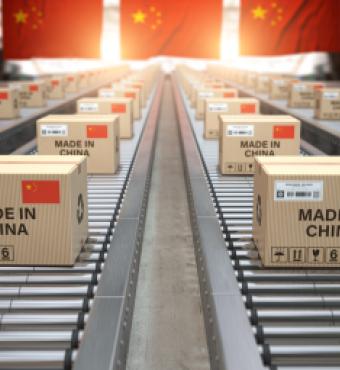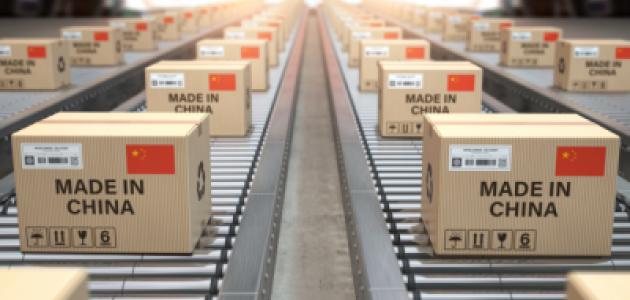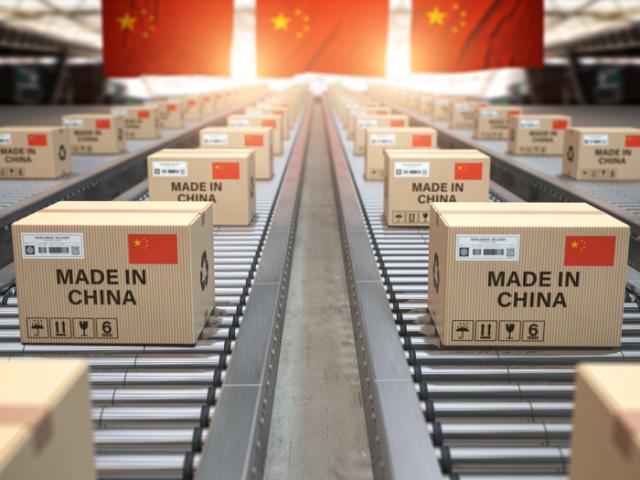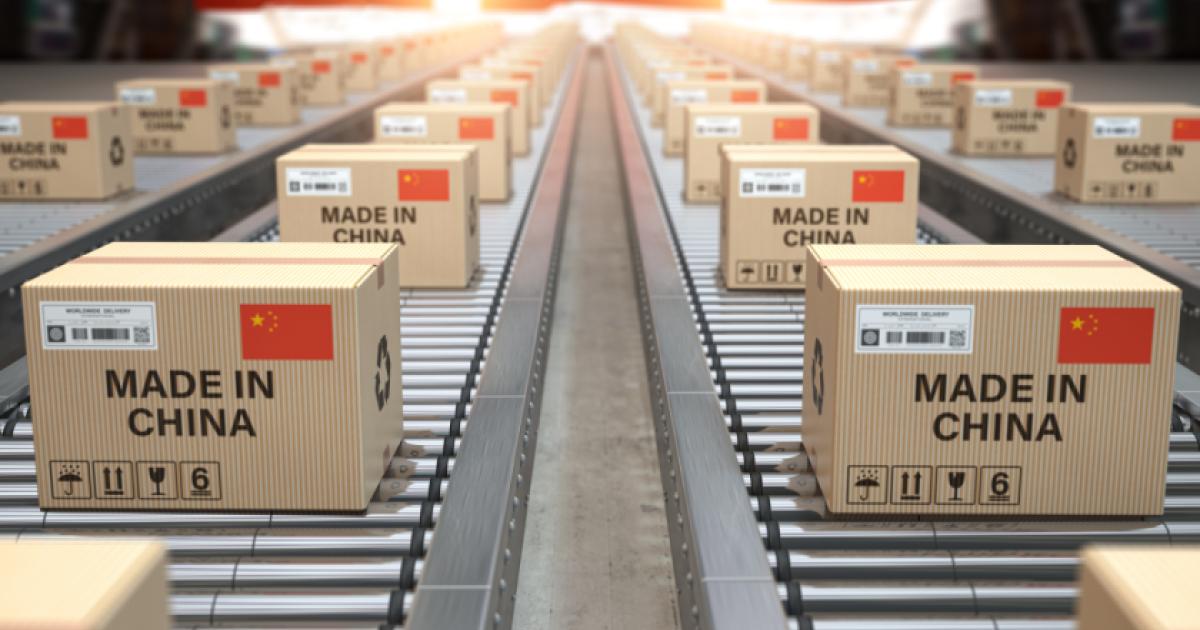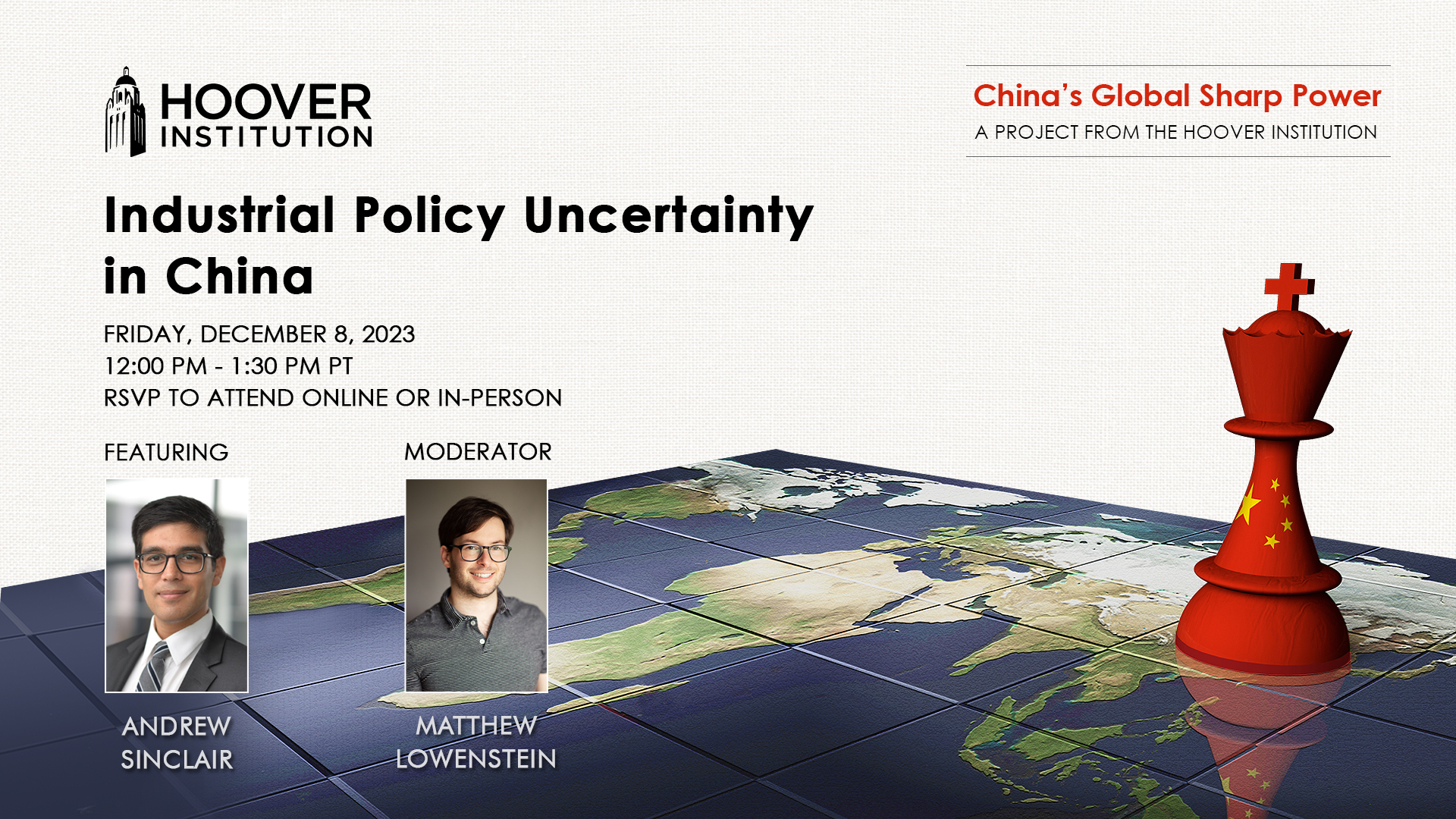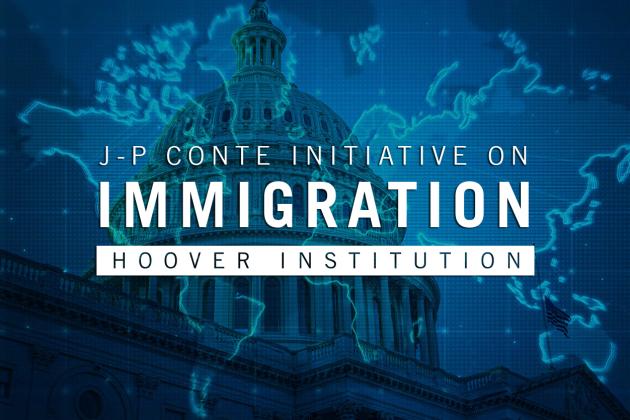The Hoover Project on China’s Global Sharp Power held an event titled: Industrial Policy Uncertainty in China on Friday, December 8, 2023 at 12:00 pm PT.
Will China maintain its comparative advantage in industrial policy? State-led investment boosts competitiveness today, but the long-run sustainability of this model depends crucially on policy efficiency. In this talk, Andrew Sinclair presented his work using a comprehensive dataset of all industrial policy announcements by China's State Council from 2008 to 2022 to find that policy uncertainty introduces a shadow financial cost that substantially reduces the efficiency of Chinese industrial policy. Industrial policies increase firm value, but investors heavily discount the value of future support because of the risk that policies may abruptly and arbitrarily change.
>> Matthew Lowenstein: I'd like to thank everybody for coming here today and all our friends joining on Zoom. And first, a heartfelt thank you to the events team for setting this up, particularly Amy, Sharon, and Marshall have done a terrific job. And thank you to our guest, Andrew Sinclair, for coming up to to Hoover to share some really interesting work today.
Andrew is an assistant professor of economics at Hong Kong University. He's a visiting assistant professor at Caltech. He's been published in the Economic Journal, the Journal of Economic Theory, and he studies Chinese political economy and industrial policy. And it's a topic really dear to Hoover's heart for at least several generations.
You know, how do economies and political systems different from our own function is not always an easy question. And so today we're really excited to hear about Andrew's work on Chinese industrial policy. So I'll let you take it away, Andrew.
>> Andrew Sinclair: Thanks very much, Matt, and it's a great honor to be here today.
Thank you very much for having me. All right, so today I'll be presenting a paper about chinese industrial policy. So this is joint work with my PhD student Zhang Chuyi at the University of Hong Kong. So the main idea here is that chinese industrial policies are powerful. They're valuable, they're important, but they're also highly uncertain.
So through industrial policy, the chinese central government uses the country's vast wealth to support the development of various key industries. And this works. We've seen this work in the shipbuilding industry, in the steel industry, in photovoltaics, and we're seeing this happen right now in the electric vehicle industry.
The question facing policymakers in Europe is, should they allow in chinese electric vehicles, electric vehicles that are cheaper than their european counterparts, electric vehicles that have far superior technology. Objectively, these are better products. So we know that Chinese industrial policy works. Why does it work? Well, one reason is that it's dynamic that the chinese government, they don't really have their hands tied, that they can, they're flexible, that they can launch new policies depending on how the actual situation on the ground changes.
They can launch new policies, they can launch many policies, they can launch powerful policies, but they also have the power to get rid of policies, to adjust the policy, to reverse a policy. And so there's a flip side to this flexibility. This flexibility also introduces an inherent uncertainty.
This is a big difference from how industrial policy in the west works. When a policy is announced in China, people have no idea how long this policy is going to last. Is this policy going to last for a year, for three years or for ten years? We have no idea, even very, very important policies.
China has been going through this transformation to an innovation based economy. The tech sector is vital to this, and yet nobody saw the tech sector crackdown coming starting in 2020. So the main idea in this paper is that policies are important, policies are powerful, they're valuable, but they're also highly uncertain.
And Matt introduced me as an economics professor, but I'm a finance professor. And the first thing we teach students in finance is that people, they like value, but they dislike uncertainty. People don't like risk, and they're going to discount this risk. And so what we do in this paper is we look at how financial market participants value industrial policy and in particular how they value this risk, and we're going to see that they significantly discount the value of policy support that we know that these policies are going to work.
We know that these policies are going to have huge values, but investors today discount all of that uncertainty. Now, before I get into the results, I just want to take a moment to compare industrial policy in the US versus in China, because these two things are very, very different.
This is a little bit small, so I'm sorry if you can't read it, but here I have a screenshot from the Chips act. So here we have the chips act. The CHIPS Act is a piece of statutory law. It passed both houses of Congress. It was signed into law by Joe Biden.
And the CHIPS Act is very specific. You know, it talks about the amount of money available. There is $50 billion available. It talks about where this money comes from. It comes from the treasury. It talks about how long this money is available for. It's available for five years.
It talks about what you need to do in order to get this money. The CHIPS Act is 394 pages long. It is very detailed in what you need to do in order to get access to this money. When we think about industrial policy uncertainty in the US, the uncertainty comes from the process of drafting this policy.
It comes from the debate in Congress. Right now there's huge debate in Congress about funding. I mean, funding Ukraine is not really an industrial policy. You can sort of think of it as it is, but that's the sort of uncertainty. Once the policy is drafted, the uncertainty is relatively much lower.
Now, in contrast, in China, here I have an example of Chinese industrial policy. So this is not statutory law, this is an administrative policy. I'll go through what this whole block of text says, but basically this is a policy. This is a notice that has been issued by the state council, the state council is the highest executive organ of power in the PRC.
So you can think of it like the White House. This is a notice that is being sent to all local government officials. So in the beginning here, the title is that this is the state council's notice about developing the integrated circuits and software industry. The very first line up here addresses this notice to the people's governments of all provinces of all autonomous regions of all cities at the national level.
It directs it to all departments and all commissions and departments of the state council and all departments beneath the state council. It says, here is this new policy. Please implement it conscientiously. This is the central government telling local government officials here is a new policy about supporting the development of integrated circuits of the chips of the semiconductors industry.
Please implement it now. If we go through this document here, I've started in section two, funding. You don't have to be able to read Chinese to see that there are no numbers here. It's very different from the chips act where you can see the numbers they stick out right at you.
There are no numbers here. There's no amount of funding that's prescribed. There's no horizon for how long this funding will be available for. If you read through this section, it says that. It says local governments should use any type of funding in order to help fund these industries.
That they should use national level investment funds, that they should use local government investment funds, that these are the. Industries that have a lot of intangible capital, but intangible capital is difficult to value. And so they're telling local governments to provide guarantees, to provide collateral to these companies so that they can borrow.
They're telling them to help local banks provide funding for these companies. They're telling them to help local companies get access to the bond market, to the equity market. They're telling them to help them engage in mergers and acquisitions. So this whole section, it talks about all of the things that they can do.
Basically, it's all hands on deck. Any way you can get funding to these companies? Please, please go ahead and do this. Now, the thing is, this is going to be valuable, but if you're a government official, you receive this type of policy. But every year, you're also receiving dozens of policies.
There's dozens of industrial policies that are announced every year. You don't know how long this policy is going to last. So the government's serious about this today, but they might not be serious about this tomorrow. And so what this means is that if you think about all this potential value, if I'm a local government official, I'm going to implement this.
If I think the government is serious about it, if this is important, if I implement important policies, that's how I get promoted. And so the most important thing to me is to try to figure out which one of these policies are important. Now, one of the key sort of sources of uncertainty here is that if the government was talking about a policy last year, but they stopped talking about it, is it still important?
Am I gonna keep implementing that policy? Next year they start talking about another policy. Which policy should I implement? And that's the source of this uncertainty. And so you can see the uncertainty in this plot here, this uncertainty that's resolved over time. Here I have the stock returns of firms that have received industrial policy support.
So at time zero down here, this is when we have the first announcement of a supportive policy. The only difference between these two lines is that the black dashed line are firms that receive one year of policy support that the government says, we're going to support this industry.
And then the following year, they're silent, they stop talking about it. And so if you're a local government official, you're not going to continue to support this industry. The red line represents firms and industries that receive two or more years of policy support that after that first year, the government continuously talks about it.
And so here you can see the uncertainty that at time zero, when we're looking at the announcement of a policy. We don't know, are we going to be on the red line or are we going to be on the black dashed line? And that's a huge difference in value.
Investors don't like this risk. And because of that, they're going to discount this. And that's the whole point of today's paper. So what we do is we look into how investors discount this potential future value. This is a lot of value, but it's very random. And so we use public financial markets to price industrial policy uncertainty.
We find that investors discount industrial policy support by between six to 12% per year. This is huge. That's a lot. That's like saying that we know that industrial policy is going to produce $100 worth of value. We know that this is going to happen in expectation. After adjusting for other sources of risk, people are only willing to pay about eighty eight cents to ninety four cents on the dollar for this.
It's a big discount. To sort of put this in perspective, we can look at the stock market valuation of these firms. The stock market valuation of these firms because of this uncertainty is reduced by about 72 to 202 billion renminbi per year, about 10 billion to $28 billion per year.
That's about the size of two small Fortune 500 companies. The value of this discount, the sort of lost value because of this uncertainty would be like if we didn't have United Airlines or Fox News. Think about how much worse the world would be without United Airlines and Fox News.
Okay, so that's the paper in a nutshell. I think I will talk a little bit about contribution, just a bit. So the uncertainty that I'm talking about here that these policies have this uncertainty, this is something that's tied to the fundamentals of China's political system that the government cannot credibly commit to these policies.
They can't say that we're going to support this policy for the next ten years because they can always change their mind. Other papers that have looked into chinese industrial policy, they analyze what's going on and they analyze the inefficiencies of chinese industrial policy. So I have a paper up here by Professor Xiang Jin Wei at Columbia.
So this is a great paper. He looks at a subsidies program in China, and he shows that in that subsidies program that the return to the government is about negative 20%. That's a grossly inefficient program. But the thing with that program is that that's a policy and that policy can be fixed.
That's an inefficiency that through policy experimentation, that through policy refinement can be overcome. But the uncertainty that I'm talking about here, the cost to this uncertainty is one that can't be overcome. Because it's something truly fundamental to how China's financial system and how its political system works. Okay, so next, what I'll do is I'll go through the database that we have.
So we have 5762 documents that we hand collect from the official policy document database of the State Council. Our documents come from between October 1996 to July 2022. We have the title of the document, we have the content, the body of the document, the publication agency. So which agency within the State council issues this document?
The publication date. So when the document becomes publicly available, the origination date when the document was written and distributed internally, and the document theme. So how does the government classify this document? We focus on the 2,663 documents that are published after March 2008. That's because the publication dates, they all bunch in March 2008.
So for documents before this, we don't reliably have a publication date. Of these 2,663 documents, we find that there's 1,574 that are policy relevant. So some of these documents, this is the State Council, this is the highest executive branch of the government. They're going to have documents that are related to policies for governing the country, but they'll also have documents that are related to things like establishing holidays and things like that.
They have to have policies for every aspect of society. And so of these documents, about 1,500 are policy relevant. We identify these by searching the titles for 11 keywords that indicate administrative importance. So we look for words like decision, jueding, and opinion, yijian. Once we have these 1500 documents, we then map them.
We map the theme to industries. So we try to identify which one of these documents are industrial policies. So of the 95 officially defined policy document themes, we're able to map 34 of them to industries. So of the 1,500 policy documents, we identify 444 national industrial policies. So from 2008 to 2022, we have about 444 national industrial policies.
The themes that we're able to map are things like. Like aerospace, agriculture, banking, and textiles. So those are things that are clearly related to industrial policy. The ones that we're not able to map are things like religious affairs, women, and children. So that would be like the one child policy or the multiple child policies now, or the Taiwan affairs.
Of these 444 national industrial policies, we then do a very simple textual analysis, where we analyze the title to see whether or not these are supportive documents, whether these documents are providing explicit support to support the development of a particular industry. So of the 444 national industrial policies, we find that 314 have policy support.
We search document titles for at least one of 22 positive words, such as promote, cujin and develop. And if we don't find these words, we classify this as non supportive. So of these documents, about two thirds are supportive. About one-third are sort of ambiguous. It's not really clear.
Here, I have an example pulled from our database. So this is a little bit, maybe difficult to see. So I'll just go through it a little bit. On the top left there, it describes which agency of the state council is issuing this document. On the top here, we have the theme.
The origination date within the government was April 4. No, April 8, 2022. The publication date publicly was April 21st, 2022. This document is titled the State Council's opinion on pushing forth the development of the individual pension plan system. So, in China, one of the concerns is that the Social Security system is grossly underfunded, which is a concern in many countries.
And so here, they're trying to encourage individual citizens to save for retirement using private financial markets. The way the document starts out. So the very first line again is this document is being addressed to the people's governments of all provinces, autonomous regions, cities, to the departments and commissions under the state Council.
The first part just says that this is consistent with a variety of different chinese laws. And then the third paragraph down here, before we even start talking about what this policy is, it says that this policy is guided by Xi Jinping thought for a new century, for the new era.
And then it gets into the details of the policy. So here we have the policy. It was announced April 21, 2022, the very same day. We can see that this policy is announced in the people's Daily. So in the national newspaper, in Wenhui Bao, the policy is being discussed.
So everybody in the country knows about this policy. This policy is important. And so what we can see a few days later. So here I have an excerpt from an analyst report. So this is an analyst report from Dongxing Securities. It's dated April 25th, 2022. So once this policy was announced, analysts, equity analysts working at Dongxing Securities, working at securities companies all across China, analyzed this policy and they try to figure out, is this good news for the industry or is this bad news?
So essentially exactly what we're trying to do. And so they come to the conclusion that this is good news. So up here, under the date it says or it says buy or hold. This is a buy hold recommendation for this particular industry. So these policies, people pay attention to them.
These policies are things that the entire financial market is watching very closely. Here I have the distribution of policy documents over time. The darker blue are the number of supportive documents. The lighter blue, which I don't think you can see on this projection, are the non supportive documents.
But generally you can see that on average, we're looking at about 20 supportive documents every single year. So every year the state council is announcing about 20 supportive industrial policies each year. You can see that there's a big spike starting in 2015, 2016, that coincides with Xi Jinping's first five year plan.
So when Xi Jinping came to power, he inherited the previous five year plan from Hu Jintao. But in 2015, he gets to really set his own agenda. So there you see this blossoming of industrial policies. Here I have the number of supported firms and the number of supported industries.
So the top plot here is the number of supported industries in red. In total, over this entire sample period, we have 53 supported industries. There are 84 industries in China. So over this entire period, about two thirds of all industries in China receive some kind of policy support.
On average, about 25 industries at any given time are receiving positive policy support. So at any given time, about one third of all industries in China are receiving support from the government. If we look down here, we have the number of stocks that are being supported. So in total, about 2,900 stocks are supported.
During the sample period, I think there were about four and a half thousand stocks in China. So a little less than two thirds, or about two thirds of all firms in China during our sample period received some kind of policy support. On average, about 1000 firms in China at any given time are receiving positive support from the central government.
So this is the support. The support is valuable. So here what I have is a regression where we're looking at the firm level, we're looking at whether or not they receive support, which is the first line and a measure of the strength of this support. So over the past year, what fraction of supportive policies were relevant to your industry and what we're looking at is how does this affect firm fundamentals or firm values?
The next year, we have cash growth, we have short term loan growth, we have ETR is effective tax rate and R and D spending growth. And what we can see is that supported firms, they have higher growth in cash, they have higher growth in short term loans, they pay less taxes, lower ETR, and they have a higher growth in R and D expenditure.
And so, relative to the mean values, a one standard deviation change in support strength increases cash growth by about 15.1%. That's a pretty big impact on cash. Increases short term loan growth by 12.3%. Reduces effective taxes by 2% and increases R and D spending growth by about 9%.
So what we're seeing here is when these firms in these industries receive positive support, they have more money, they have more loans, they pay less taxes, and they're using this to engage in more R and D. So sort of exactly the sort of things that you would expect to see after a firm receives industrial policy support.
Now, this is very valuable at the firm level, but it's also highly uncertain. So here I have the conditional distribution of policy support. So if we look at those 53 industries that have received some kind of policy support, we can ask, how long does the. This support last, and here you can see it's a bimodal distribution.
Here you can see that for about one third of firms, about 34% of firms, they receive only one year of policy support that the government starts talking about. This policy starts talking about this industry, and the next year they stop. But for about 25% of firms, they receive ten or more years of policy support that the government consistently talks about them throughout this entire period.
There is a huge difference in the value to the firm. If you get ten years of support versus one year of support, even if you've been supported for three years, for five years, there's still a high chance that next year support ends. So conditional on receiving support, the probability that you receive support again next year is about 65%.
So you have a one-third chance of support arbitrarily disappearing. Okay, so next we can look at what is the effect in financial markets. These policies are valuable, these policies are uncertain, what happens when these policies are announced? And so actually, there's not much stock market movement. So a policy is announced, and the stock that they don't really move that much.
Why is this the case? There could be a lot of reasons. It could be that even though the policy is publicly announced, that it was already distributed within the government, that people already knew that this was happening. These are policies that are announced at the national level through the state council.
But if it's announced at the state council level, it was probably discussed at local government level, at the local government level for many months leading up to that. So people probably knew that these policies were coming. And so that's why we probably don't see any reaction at the announcement date.
When I went to Shenzhen to talk to traders about this, they say, we don't trade on the announcement. What we do is we trade on the trend of policies. We look at whether or not these policies are being consistently supported over time. And so if we look over time, we do see these persistent long term returns.
So starting with the first supportive policy announcement, you can see that over the first year or so, returns don't really go up that much. But over time, we see these massive returns. On average, they're generating about 170% returns over five years. If you were to annualize that, it's over 20% returns every single year, so they're very high returns, and we know that this is gonna happen.
This is an empirical regularity. If you go to China right now and you have a trading strategy, where all you're doing is asking, what is the central government talking about and investing in those stocks, you can be earning 20% returns every year. That's remarkable. Everybody in China knows this, everybody follows these policies.
They know that this is going to happen and yet this doesn't get arbitraged away. There's a reason for that. And I'm going to argue today that this is because of this uncertainty, that on average you're going to get 20% returns. But you could be in an industry that experiences a crackdown, you could be in an industry where these policies disappear.
That's the risk that you end up facing. We're going to next look at how do we calculate this, how do we price this industrial policy uncertainty? And so what we'll do is we'll build what I call the industrial policy uncertainty portfolio, the IPU portfolio. We build a simple trading strategy to capture firms subject to this post announcement industrial policy uncertainty.
And so this is really the unique feature of China here. In the US, once the policy is announced, we don't really think there's that much uncertainty. It's statutory law. We know how much money is available, we know how to get this money. But in China there's a lot of uncertainty that arises even after the announcement.
To do this, we sort firms by one, policy support over the past year. So we're looking at the universe of firms and we're asking which ones have received policy support over the past twelve months. And we also sort firms by size. So what we found in our analysis is that policy support really matters.
For small firms. Policy support, having the support of the central government can really make or break a small firm. But if you're a large firm, if you're a large SOE, you already have policy support. If you're a large private company, if you're sort of the champion of an industry, you already have policy support.
You don't need this. But for small firms, it really, really matters. What we do is we build this portfolio of small. So below median supported firms, we hold this portfolio for one month and then we rebalance, so we're rebalancing this portfolio every month. We evaluate the returns to this IPO portfolio using three standard models or two standard models in finance, the CAPM model and the Carhartt model.
And in China there's been a recent model called the CH4 model that addresses the unique aspects of the Chinese model, of the Chinese market. So we're going to evaluate the unique sources of risk for these portfolios here. Now, I realize that this is a very financed slide, and I realize that most people are not finance professors in this room, so I need to explain this a little bit more.
What we're doing here is we're looking at the returns to the strategy. We're looking at the behavior of this strategy, and we're projecting this onto the space of known risks, known things that people care about. And once we do that, once we take out all of those known sources of risk, we're looking to see if there's anything else, if there's anything else that we're being compensated for.
That's not one of the standard priced risk factors. And so, essentially what we're going to do is we'll run a regression of our IPU portfolio returns on standard risk factors. And the most important thing is going to be this alpha term here. We're going to ask, does this IPU portfolio, if we follow the government and we make investments following what the government is saying, do we earn any extra returns that cannot be explained by any of the existing risk factors?
And so what we wanna see is that alpha term being positive and significant. And so here I have the results of this analysis. Let me do it this way. So here we have the CAPM model, here we have the Carhart model, and here we have the CH4 model.
We have a portfolio of no policy support, of nonsupportive policies and supportive policies. So the third column in each of these groups, that's the one that we want to look at. Ideally, this alpha is positive and significant. And so here you can see that under the CAPM model, it's producing about 1% alpha per month.
This is 12% alpha. So 12% extra or excess returns per year. For the Carhart model, it's producing 0.5% per month, or about 6% alpha per year. And for the CH four model, it's producing about 0.6% returns per month, or about 7.2% returns per year. So what we can see here is that if we invest following policy support, after everybody in the market knows that these industries are going to receive support, we can We can still generate these very high returns.
We're generating these returns because we're exposed to this type of risk, this policy uncertainty risk. Now, you'll also notice that this group of no policy stocks is also experiencing a positive alpha. This is a feature of the Chinese market. It's a feature that small firms tend to produce these higher returns, and it's difficult to explain.
And so the Carhartt model includes a factor called size that addresses this. And so you can see this ends up going down. But this third model here, this third model here was developed by Robert Stambaugh at the University of Pennsylvania. And the model here is supposed to address this fact.
It's supposed to address this phenomenon that these small firms produce this positive alpha. And so what he does in the model is he recognizes that small firms in China, they have this residual shell value, that it's difficult to become a listed firm in China. In order to become a listed firm, you have to go through this very lengthy and expensive process.
And so what he realized was that if you're a small firm, another firm that is private can come and buy you. They can engage in a reverse merger in order to become listed in order to save all those costs. And so what we do in this last model is we adjust for that.
And you can see that once we adjust for the source of returns that we get from these small firms, you can see the alpha on the no policy group goes away. And you can see that the alpha on our supported group remains positive and significant. So even after controlling for all of these sources of risk, all of these sources of returns, we're still able to generate this positive and significant alpha.
And so here you can see this alpha over time. Here you can see how these returns are earned over time. So here the red line represents this portfolio of supported stocks. And you can see that consistently throughout this sample period, that if you listen to what the government is saying, if you invest following the government, you end up earning steady returns.
Steady positive returns every single period. You can see that here during this stock market crash, we're still earning positive returns. You can see that it's fairly consistent all the way to here. So what is this point? It's not COVID, cuz COVID starts in January 2020 in China. So even after COVID, the policy starts going up.
The policy peaks, well, the strategy peaks in October 2020. It peaks when Jack Ma gets up in Shanghai at the Bund Summit Finance and criticizes the government in front of all the regulators. It peaks just before the tech crackdown which was the biggest reversal of industrial policy. This strategy, what you're doing here is you're investing in government policy.
The risk that you face is that government policy abruptly and discontinuously changes. And that's exactly what happens here. When the policy changes, you end up losing that money. And so that's why I think that this is a risk premium. This is something that everybody knows. Everybody knows that you can make this money.
The reason that this doesn't go away is because this is compensation for a risk. It's compensation for the risk of industrial policy uncertainty. So in the last few minutes before we open it up to discussion, I'll talk about the robustness of this result. So here I'm talking about industrial policy uncertainty.
And at Stanford, Nick Bloom has a very famous paper about economic policy uncertainty. So economic policy uncertainty is this idea that there's macroeconomic uncertainty, that there's uncertainty about monetary policy, there's uncertainty about fiscal policy, there's uncertainty about regulation. And so here, what we're capturing is something kinda different.
Right now in China, there is huge economic policy uncertainty. People don't know what's gonna happen in the economy. But industrial policy uncertainty is something slightly different. If you think about when industrial policy uncertainty arises, it arises when the government is making policy, when the government has issued policy.
And so you could imagine that in times when economic policy uncertainty is high, it's not necessarily the same as when industrial policy uncertainty is high. And so if we end up controlling for economic policy uncertainty, it doesn't really explain our results. And, in fact, we do find some negative correlation that here we're documenting a feature of policy uncertainty that's quite distinct from the existing economic policy uncertainty literature.
The other thing, so at HKU, I teach a hedge funds class, and every year a group will come up to me and say, we have a great idea for a hedge fund. We're gonna start a hedge fund that invests in the tech industry. And they'll show me a plot of Apple stock over the past 15 years, and they'll say, look how great this is.
We would have made 20% alpha every single year. And I say to them, that's not a strategy. That's just investing ex-post. That's investing based on knowing the future. And so one potential issue here is that if we're investing in industrial policy, we're investing in tech. And the Chinese tech sector has done phenomenally well over the past 15 years.
So maybe we're just picking up a tech premium. And so what we do is we remove the tech sector from our analysis of those 53 industries, we remove anything related to tech and the results still hold. So even if you're looking at shipbuilding, even if you're looking at steel, you're still seeing these types of returns.
The other issue is that our classification of support there, what we're doing is we're just reading the title and we're looking for certain words. So that might introduce classification error. There might be cases where positive words don't necessarily reflect the true sentiment of this policy. So sometimes you'll see something in China like support the development of this industry with regulation.
With regulation means that this isn't a supportive policy, this is actually trying to control this industry. And so in order to address this issue, what we do is we go through and manually read all of these industrial policies and we reclassify them. When we reclassify them, we get about a 71% match rate, and about four to five times the error that we find is we're reclassifying a supportive document to a non-supportive document.
So it's exactly this type of the situation of supporting the development of an industry with regulation. And when we do that, we find that our results get stronger. So it's not driven by classification error. And then the final thing that we look into is research and development. So we saw earlier that these firms that are receiving positive policy support, that they're doing more R and D, that as they get this money, they're sort of changing their business enterprise.
And so as they change that fundamental business, they're taking on more risk. And so that might address the returns that we find. And so what we do is we build an R and D risk factor and we control for that and the results still hold in the end.
So it's not being driven by this changing risk characteristics either. And so, to wrap up the talk before we get to the discussion. So the conclusion here is that Chinese industrial policies are powerful, they're transformative, but they're also highly uncertain. In this paper, we study post announcement policy uncertainty, which is something quite unique to the chinese market.
Investors discount this industrial policy support by between 6 and 12% per year. That's fairly large. You can think of it as reducing the equity of supported listed firms by between 72 and 202 billion renminbi, or about ten to $29 billion each year. This uncertainty that we're documenting here is tied to the fundamental institutions of modern China.
At the end of the day, the reason that we see this uncertainty is because the government cannot credibly commit to policy implementation, that they can't tie their hands. This is what gives the chinese economy its dynamism, its flexibility, but it also introduces this uncertainty, this type of risk.
So that's it for me. So thanks very much.
>> Matthew Lowenstein: Wow, Andrew, that's terrific. Thank you so much to Professor Sinclair. This is a really terrific paper and a really creative and really original paper. Usually when we talk about Chinese industrial policy, we'll look at one policy and we'll kind of take it as a given and think, all right, how is this policy going to impact the Chinese economy?
Geostrategic considerations over the long term. And we might look at how other policies that have been in place for a long time, how those have fared similarly by way of comparison. What you're saying is this is kind of a form of survivorship bias, that actually, we don't know if we can't take any Chinese policy for granted because, as you say, they're flexible and they're uncertain.
So it's looking at policy at a more meta level, the institutional framework in which policy gets made, and saying that that's pretty important. And there's a lot of interesting here, and a lot of it resonates with my own experience working in Chinese equity research. Back. Let's see. Between about 2011 to 2015, I was based in Beijing.
And this is all very familiar in Chinese. They say that the government meaning the government can't sit still. They're always tinkering with policy. They're always reaching in to fix a problem or perceived problem in the economy. And I was on the sale side. We'd always argue with clients, mostly in hedge funds, who believed that government support was an unalloyed good.
And the problem is exactly as you say, that it can look pretty good in the short term, but in the long term, it does create an enormous amount of uncertainty. And in particular, when we would look at ADRs and H shares, and these are Chinese companies that list not in the domestic market that Professor Sinclair is looking at, but in the US and Hong Kong, you'd see that policy support also creates fraud.
And it's because companies are getting a lot of subsidies. They don't want to report their income as subsidy income. And so they find ways to pretend that it comes in through operating revenue. And so this is more, I would say, anecdotal support for your thesis that they know subsidy revenue is going to get heavily discounted.
And then every once in a while the rug gets pulled out from under the industry that enjoy support. The tech industry is the most recent example, but going way, way back, coal could be a canonical example. And then what you're left with, you don't just go from where the industry was with heavy support to where it would have been had there never been support.
What this paper shows is that economic efficiency degrades in industries that get support. And I would add, you get more competition than you would have had there been no support to begin with. And so you go from an industry that looks really healthy to an industry that looks really unhealthy quite quickly.
And then usually the government they step in to clean it up and they force all the state owned enterprises or big companies to gobble up the little ones. And this is why people say that the joke is, you know, everyone is too big to fail in China. So this really resonates.
It's really, really fascinating and I think it's really new and interesting ground. I have a few comments and questions to get us started. I'm not going to talk too long because we have a big crowd. But my first question is, let's say I'm a hedge fund manager or a policymaker.
What do I take away from this? And you can feel free to pontificate beyond perhaps what the data can prove. But I'm just curious. And then another question I had as I read this is you said that R and D, in the paper, may be one reason that profitability goes down.
Does this mean that the R and D is often being misspent? Or if we take a long enough time series, does profit, do efficiency measures begin to look good again? Or do we just not know?
>> Andrew Sinclair: Okay, so for the first set of questions about hedge funds or policymakers.
It's funny, yesterday I was in San Francisco visiting Blackrock, and I presented this paper to their systematic equity group, to their China group, and they said, this is the strategy that we trade in China. So they're doing this. They know that this exists. In a sense, if you're a domestic chinese investor, you face this risk and you can't diversify this risk because of capital controls.
You can't move money out of China. But for a hedge fund, this is a pattern that you could take advantage of. And the hedge funds are not too worried about long term efficiencies. They're just trying to earn this alpha. They can diversify this globally, and so they're perfectly fine.
But for policymakers, I think it's a little bit more nuanced because this is not necessarily saying that there's some welfare loss here. This is not necessarily saying that this is objectively bad. Because you have to sort of weight this against the value of having this flexible, powerful policy.
I think this sort of ties into your second question about efficiency. Is this efficient? Well, what does that really mean? If you look at the EV industry right now, there are 60 or 90 ev companies. They're all receiving government funding, and a lot of them are going to be inefficient.
But the way that industrial. Policy in China works is it's very similar to the old GDP tournament. So if you know the GDP tournament for government officials, the government would have government officials or the central government would tell these government officials all across China, at the county level, you have access to all of these state resources, go out and try to produce as much GDP growth as possible, and whoever produces all that growth gets promoted.
And it's the same type of thing here. There's 90 EV companies, they're gonna receive all of this free money and you could be corrupt and you could just steal all this money, but you're also in competition with everybody else. And if you win that competition, you become the largest EV company in China.
And that's what BYD has done. And now BYD is poised to go to Europe to expand globally. If you look at it just within the chinese market, you could say, ok, this is grossly inefficient, but if you think about the fact that BYD could be a global leader in the EV industry, then that's one level above that adds a lot of value.
I think if you think about, I guess I should say the photovoltaics industry is also a good example where you had gross inefficiency. You go in there 15 years ago and there were all these cases of corruption. But in the photovoltaics industries, we saw some companies, some companies created good technology, good innovations that they spent their R and D on.
And now Chinese solar panels are cheaper and more efficient than their European counterparts. And so you can think of the EV strategy as very similar to what they did in photovoltaics as well.
>> Speaker 3: Sort of showing me that investors don't like risk, doesn't seem that big of a deal.
So it's like, where is this cutting? What is the alternative hypothesis that's being rejected?
>> Andrew Sinclair: So do you mean something like a mispricing story? No, no, that's not a news flash. I think the news flash is that they don't like risk. And in China there is this industrial policy risk that is non diversifiable because it affects about a quarter or a third of all firms.
So you can't diversify it domestically. And chinese investors have capital controls, so they can't diversify this internationally. So if you think about this from an asset pricing point of view, this is in a sense like a new risk factor that is unique to the China market. So yes, people don't like risk, but this is a very specific type of risk that people in China care about.
>> Speaker 4: Thanks. You made the comment that a feature of modern China governmental structures is that the government cannot credibly commit to the longevity of these policies. Could you reflect for a moment on the difference between cannot commit and won't commit or doesn't commit? Could there be mechanisms to allow them to improve commitment?
>> Andrew Sinclair: I have a paper on this, so you can think about. So why can't they commit? Imagine if the National People's Congress passed a law supporting this policy, right? If they passed that law and if the state council broke that law, what would happen? You can't sue the State Council.
It's not like in America where you could have Matt Lowenstein versus the US government. That wouldn't go anywhere. And so even if they wrote this law, they couldn't credibly commit to it. That being said, oftentimes when we look at China, we say that the government can't do something.
They had the one child policy and that one child policy lasted far longer than it should. And people often said, why can't they change the one child policy? And the response that I got was that they couldn't change the one child policy because they couldn't admit that they had made such a terrible mistake.
So I think there is something that does allow them to commit, but I think it has to do with, really, politics. So one example is the housing market. The government has to commit to keeping housing markets high, or at least preventing housing markets from collapsing, because if the housing market collapses, there are going to be people protesting in the street.
And so the only thing that really can get this government to commit to something is the threat of regime change. So if they really want to commit, they have to sort of expose themselves to that risk. But that is the biggest risk that they face.
>> Speaker 5: Thank you for the talk.
Because you discussed this from the perspective of investment, it's difficult to understand because I'm not interested in investment. I'm interested in understanding China's economic structure or policy in general. So then you said that industrial policy has uncertainty and then create risks. But if you think about China's growth for the past decades and then somehow industrial policy worked, and then how you just not in terms of investment, in terms of growth, and then China's general economic structures, how do you explain the industrial policies merits as well as the source of growth, then we can understand.
Now China had to invest a lot in very important sectors, and it's very fast moving. So if you are approaching this only from the perspective of investment, maybe we lose sight of what is important.
>> Andrew Sinclair: I think you're absolutely right. And then that's why I'm not really saying that this is bad.
I can't say that, okay, there's this cost and this is bad because we can't really measure what the benefit of having this flexibility is of being able to implement this industrial policy, to implement 20 industrial policies every single year. We've obviously seen a lot of successes. I can't really say much about the inefficiency in the real economy.
But here what we're really seeing is that within the financial market, that this might lead to an inefficient allocation of resources, that if the government could commit, we would save that 7,200 billion renminbi every year. But that's really the cost. Whether or not this can be balanced by something else, I can't really say.
But I think at this stage, what we're really trying to do in understanding how chinese economic policy works is to understand both the costs and the benefits. Right now, we're still at a very early stage where we just need to identify what these costs and benefits are before we have any hope of making a larger welfare statement.
>> Matthew Lowenstein: I'll interject while the microphone is en route with a question from online. So Xiaoshan asks, thanks for a great event. This is Xiaoshan, a reporter with VOA. China became the first in the world to put the latest generation of nuclear power technology into use as a power plant, with two new reactors started commercial operations on December 6.
China accounts for 25 of the 61 reactors that are under construction globally and is expected to pour as much as $440 billion into new plants. My question is, does the US fall behind China on nuclear energy? On hash? Nuclear energy, sorry. And why? How to make sure that the US can win this atomic or nuclear energy competition and keep an edge over China?
>> Andrew Sinclair: Well, I don't really have any expertise.
>> Matthew Lowenstein: We're counting on you, Andrew.
>> Andrew Sinclair: Well, I think something like this, though, I think in a sense, it's difficult to sort of have this horse race between industrial policy, because in the US, you're not going to be able to compete with every single one of China's industrial policies.
Because in China, the government, under the socialism, the government, has control over a vast amount of the country's resources. It's like all the land in China is under the control of the government. The banking sector is essentially under the control of the government. And there's 320,000 state owned enterprises.
So when the government wants to have one of these industrial policies, they really can take the wealth of the chinese nation in order to make this happen. Whereas for the US, the government doesn't have the funds to do that. We don't necessarily want the government to have the funds to do that because we're not sure the government can implement that efficiently.
But really, it's going to be difficult if every single time we have one of these industrial policies in China, the us government is not going to be able to keep pace. And so I think they have to sort of pick and choose which ones they would like to.
>> Speaker 6: I have a question about the policies, and you identified about 300 supportive policies over 15 years or so, and you showed the longevity and duration of those. And I'm wondering whether you can talk to the link of these supportive policies to the five year plans in that period.
If there is any linkage, or whether this is really just disconnected, there's a five year plan and then there are policies.
>> Andrew Sinclair: I haven't looked into that link, but now that you've mentioned it, I will, because when I show the distribution of when policies are announced, there was a big spike around the construction of Xi Jinping's first five year plan.
So I haven't quite thought of that yet. The five year plan, in a sense, that allows them to commit a little bit, but it's not iron clad, they'll still be able to adjust. And that's really what the tech crackdown showed, that even if something is mentioned in the five year plan, they can still change this policy.
>> Speaker 7: Yeah, so you showed that some companies manage to get policies all the time and they stay on the right side of your plot. Right. And so what makes that happen? Do you have to be a member of the Xi family or do you bribe, what's a transparent metric that the government uses?
That says yes, well, as long as they stay above some certain indicator we'll issue a policy every year that says you're good.
>> Andrew Sinclair: No, I mean, I definitely don't think there's a transparent meter that we can use to evaluate that. But not thinking about, we're not looking at individual firms here, we're looking at an entire industry.
We're looking at an industry. And these policies don't only affect publicly listed firms. So in a sense, we're just looking at a small slice of the entire economy. These policies affect all the private firms as well. And so I don't think if you had an industry, I mean, maybe if there was one or two industries that effectively were under the control of the sons and daughters of the political elite, then maybe that might be a different story.
But I don't think that's what's driving this ten year longevity. I think the ten year longevity is really going to be more about strategic industries. So if you think about in the late 1990s and the early 2000s, when China implemented their heavy sector industrial policy and they started focusing on things like automobile manufacturing, on the growth in the real estate industry.
Those were policies that were supported for a very long time, and they formed, really the foundation of this new growth model. But even if it is the foundation of a new growth model, it can still change. And so right now, we're seeing this transition from the old growth model to the new growth model.
But things are not transitioning smoothly. And we saw that with the tech crackdown. So some of these industries, maybe the risk didn't materialize, and that's why they got to ten years. But for other industries, it would have showed up halfway through.
>> Speaker 8: Thanks for this talk, which I found fascinating.
The market capitalization of the chinese equity market is roughly $6 trillion. So the discount that you describe here is somewhere between two tenths and half of 1% of the total market cap of chinese stocks. That seems very small to me, considering how dependent some of these industries clearly are on subsidies for their basic functioning and how difficult some heavily subsidized zombie firms, how much difficulty they may face in surviving when exposed actually to competitive market forces.
So I'm wondering if you can reflect on why the number is so small.
>> Andrew Sinclair: Okay, it could be small because we're only capturing one aspect of this. So when we look at these policies, these policies are announced, these policies are announced, but people maybe already know that they exist.
So maybe our measure is not really as precise as we would like. I think you're right to say that this is much smaller than maybe we would anticipate just because policy uncertainty is so important in China. Whenever anybody in China makes an investment decision, they're constantly asking, what is the policy of the government?
If you buy a house, you're asking, is the government going to bail out the real estate market? If you run a bank, if you run a bank, at every single shareholder meeting, at every single board of directors meeting, the first agenda is, what is the government's policy and how does that affect us?
If you talk to foreign investors that are leaving China right now, why are they leaving? Because of policy uncertainty. So in a sense, I think we're really only capturing the tip of the iceberg here. I think policy uncertainty is one of the most fundamental questions in the Chinese economy.
And so, yeah, unfortunately, it's not as large as I would hope, but that's what the future research is going to look into.
>> Matthew Lowenstein: So maybe I'll interject too. And this is, again, largely anecdotal, based on when I was working over there. But yeah, I think this data set is covering changes in policy announced in official documents over time from the State Council.
I think there are certain structural factors that do lead to a discount in the Shanghai and Shenzhen markets in general, cuz these markets traded very low, very low multiples relative to other stock markets across the world. And just to give one example, The percentage of the market cap of the Shanghai Exchange, the Shenzhen Exchange, that are banks is very high.
I don't know what it is off the top of my head, and it's probably lower than it was ten years ago, but it's still quite high by global standards. And these banks are mostly state-owned enterprises. If stretching the definition, you could say, they're all state-owned enterprises to some degree, and they're not very efficient.
Everybody knows that their solvency is vastly overstated on their financial reports. And so I think that there's a universal discount in Chinese equity markets just because the companies that are allowed to list, they're not necessarily very good companies relative to what would list overseas. And I think that was Ike's intuition as well, and maybe bridges that gap.
>> Andrew Sinclair: Well, there actually might be a countervailing force for that because of that risk, there's going to be this big discount.
>> Matthew Lowenstein: Yeah, yeah.
>> Andrew Sinclair: But actually, if you look at the market risk premium in China, it's effectively zero if you look at valuations. So if you look at the so theres dual listed shares, theres companies in China that are listed both in the mainland and in Hong Kong.
These two things should have the exact same price. Its the exact same company. But if you look at the premium between the A shares and the eight shares, the shares in mainland China trade at a premium of 50%.
>> Matthew Lowenstein: Interesting.
>> Andrew Sinclair: And that comes into another thing, which is that after 2015, people realized that the domestic stock market can't fail because when the stock market was crashing, the central government arranged the national team.
So they arranged this national team of state owned banks, of state owned securities firms, of state owned enterprises, and they were told to use their massive balance sheets to buy the stock market to prevent the stock market from falling. And so if you know that the level of the stock market can't go down, you're gonna price that, yeah?
>> Matthew Lowenstein: Yeah.
>> Andrew Sinclair: And if that's priced in, if this asset, in a sense, is very, very safe, you're not gonna see that type of variation. And so that could be suppressing, getting to Ike's point, that could be a countervailing force that suppresses the discounts that we see here.
That it would be much larger if it wasn't for this blanket implicit government guarantee that exists in the stock market.
>> Speaker 9: All right, brilliant talk, thank you. Question on the long term health of industrial policy in China. Do you see it as a bright future where, for example, AI might actually enable a more efficient industrial policy?
Or do you see it as dark in the coming decades where massive shocks like workforce demographics might, where they're just not able to come to grips with it, let it lay?
>> Andrew Sinclair: So this is one of the biggest questions that I've been trying to struggle with. I think it comes down to whether or not the chinese government can devise policies that fund innovation.
If you think about the growth of the chinese economy over the first 30 years of reform and opening up, it was a system where you had this GDP tournament where you told local government officials, here's all the resources you have, go out and fund industrial development. And in a sense, funding industrial development is easy because you lend some money to somebody, they start a factory, that factory is there, and even if they fail, you can still take the factory back.
You have collateral. But funding innovation is difficult because there's no collateral. If you want to start a company where you hire a bunch of scientists to come up with a new idea, to come up with a new patent, you can do that. I can give you $100 million, but there's no collateral.
And if that idea fails, I have absolutely nothing. And so I think one of the greatest problems that China has is how do they fund innovation? How do they fund these ideas? And the central government is trying all types of policy experimentation. So if you look at the venture capital industry in China, one thing that they're doing is they're partnering with local governments.
They're getting money from local governments in order to go and fund to fund innovative firms. There are problems with that, though. So one thing that we see in the venture capital space is that these VC's are not willing to fund very early stage investments. So they're funding stuff that's about five years away from IPOing.
So getting money into the hands of like, the angel phase of entrepreneurship is still very, very difficult in China. And so in order to have, like, essentially, I think what your question is about is industrial policy for an innovation economy. And I don't know if they'll be able to solve that problem.
I think that's the most important problem facing China today.
>> Matthew Lowenstein: We have something else that just came in over the transom. Dixon asks, thank you. I do not think we are in competition with China because the chinese success story is a benefit to our own global agenda and also for the future.
Secondly, if China and the US find agreement with Japan, can this trio together with India cause a same success story for the whole Indo Pacific region? And what must a US Marshall Plan for Asia look like with China, Japan, and India being its partners? Wow.
>> Andrew Sinclair: Was there a question there?
>> Matthew Lowenstein: Yeah, yeah, so can industrial policy lead to extending the China success story to the entire Indo Pacific region?
>> Andrew Sinclair: I think that this is part of China's strategy. So if you think about the Belt and Road initiative. Actually, yeah, if you think about Ike's book, think about the Belt and Road Initiative, this is really about building these economic linkages.
It's about, in a sense, trying to recreate the chinese success story by moving a lot of this production into other countries as well. Labor is very expensive in China, but if you can move this offshore but still have it funded by chinese capital, and that can lead to a success story like if you think about the success of american multinational companies, I mean, we moved a lot of manufacturing out of America, but that also led to global growth, that led to the growth of this global middle class because people in other countries were employed.
So I think depending on the success of the Belt and Road Initiative, and there's lots of aspects to that about whether or not it will succeed. But if that happens, there is a path forward where we could see sort of the continuation of this growth miracle in countries that are along the Belt and Road.
>> Speaker 10: Thank you so much for the presentation. I just see a clear connection here, right? Between government support and success within an industry. I was wondering if there's any mechanism by which an industry can, for example, solicit the support, seeing as how their success is so highly based on it.
We see this in the United States, for example, with lobbying and how successful that is. Is there any similar mechanism in China that I don't know whether or not they can lobby for support.
>> Andrew Sinclair: I mean, I think they can lobby to a certain degree. Degree, but I think the tale of Jack Moss shows that lobbying sort of has a limit.
It's like once he was essentially trying to lobby to get a new set of banking regulations to allow his Internet banking empire to grow. And he argued that this was very important for the future growth of China, that banking couldn't rely on sort of the pawn shop mentality of the old banking system.
And he tried to get that implemented. He tried to lobby the government to get that implemented. But I think what we see in China is that there are risks to this lobbying. So I think it sort of works. It might work in the sense of building these types of relationships.
Relationships, of course, matter. Political connections matter for subsidies and things like that. But I think there is always going to be this limit to how far the lobbying can go.
>> Speaker 8: Andrew, one of the numbers that I would have expected to appear in the beginning of your talk that didn't was the value of the policy support that's actually being provided.
>> Andrew Sinclair: Yeah.
>> Speaker 8: And I know this is a fraught topic in the literature because it's so hard to quantify when firms are offered backdoor subsidies in the form of opportunities to use state land and so forth. But I think it's important to have a ballpark estimate so that we can compare the effect of the uncertainty to the sheer quantity of support being provided.
So I'm curious where you come down on both a ballpark number of state support and the method that you would think about using to come to that number.
>> Andrew Sinclair: I don't think I can give you a ballpark off the top of my head, but I think one nice thing about the financial markets, one nice thing about equity prices, is that through equity prices, we can actually aggregate all of these different channels of support.
Because when the government says support the development of this industry, there's all sorts of ways to get money into these firms. Like you said, they can increase operating revenue, they can give them direct loans, they can give them cheap access to land. There's all of these things. And we can't identify a lot of these different channels, but with equity prices, we can actually see the aggregate effect.
And so if you think about the plot that I showed you, on average, how much these industries are going up in value, that's the value that we end up seeing. So you could take that and you could multiply it by the equity value of these beginning equity value of these firms to get a sense of how much value is being created.
But I haven't done that calculation yet. No, I know, and I've struggled with this question of how to really put a dollar value on this and to really get a sense of the magnitude of this. From a hedge funds point of view, it's huge. But then from a society's point of view, it's difficult to really get a grasp of how big this really is.
But I do think it speaks to something larger, which is the pervasiveness of policy uncertainty. Right now in China, there's the crisis of confidence, which is all about policy uncertainty. That's a rest of the Chinese economy. It's like nobody wants to invest because they have no idea what the policy is going to be.
So I know that this is really powerful, and I concede that it's difficult to really think of the magnitudes in this paper, but it's trying to scratch the surface of what is the true cost of all of this uncertainty.
>> Matthew Lowenstein: If that's it, no more questions. I guess we'll wrap it up.
We're about at time anyway. Again, everybody, let's give a round of applause to Professor Sinclair. Terrific talk. And if those of you who just finished your semester teaching, have a terrific break and a great holiday.
>> Andrew Sinclair: Thanks, everyone. I really appreciate all the discussion and the different questions.
It was a lot of fun.
FEATURING
Andrew Sinclair is a Visiting Assistant Professor of Finance at Caltec, on leave from The University of Hong Kong. He is a financial economist studying modern China's financial system. He graduated with a PhD in finance from Yale University in 2017 and joined HKU the same year.
DISCUSSANT
Matthew Lowenstein is a Hoover Fellow at the Hoover Institution. He is an economic historian of late imperial and Republican-era China. Prior to entering academia, he worked as a securities analyst covering China equities at JCaptial Research.



